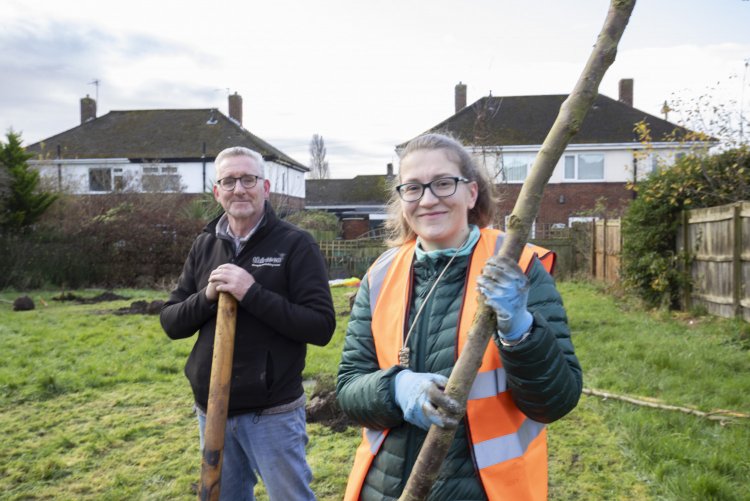- Find a home
-
Customers
- Welcome to Thirteen
- Frequently Asked Questions
- My Thirteen site
- Paying rent and charges
- Report it
- Find out
- Building safety
- Advice and support
- Regeneration and communities
- Leaseholders and shared ownership
-
Services
- Housing for vulnerable and older people
- Care and support
- Homelessness support
- Employment support
- Domestic abuse support
- Mental health support
- Support for ex-offenders
- Get involved
- News
- About us
- Jobs
- Contact us
Hear from environmental advisor Sammie Bradley: National Tree Week – so what’s the big deal?
It’s National Tree Week, the UK’s largest annual celebration of trees and the start of the winter tree planting season.
As we continue to make further improvements to the environment where our customers live, environmental advisor Sammie Bradley talks about the importance of trees and the benefits they have on our estates.

01/12/2023
We’re responsible for 13,500 trees across the green spaces on our estates and we plan to plant thousands more in the coming years. But what’s the big deal? Why are they so important?
Trees produce 28% of our oxygen, but they do so much more for us too.
Protecting our properties
Trees are instrumental in protecting homes against environmental risk. They lower the risk of flooding. Roots absorb water from the soil, so the ground can absorb more rainfall. Tree canopies intercept rain drops and slow its descent to the ground, which allows more time for flood preparation and for the ground to absorb the water. Finally, trees can interrupt overland water flow, by forcing water around their trunks, it forces floods to slow, which reduces its speed and therefore its power.
Trees create similar protection in storms, not only intercepting rainfall but also slowing and breaking down high winds, so that our homes and us as individuals do not feel the full brunt of gale force winds.
Tree roots also help bind soils, so in periods of heavy rainfall, can reduce the risk of landslides when steep lands become saturated.
Trees can also help as the temperatures rise. As the climate warms, the intensity of heatwaves grows. Tree shelter can reduce the heat a property experiences by up to 15 degrees and reduce air conditioning demand by up to 20%.
Supporting our communities
Our community orchards can provide a lifeline for some of our estates, they offer free food and an opportunity for the community to get together. We’ve seen a great example of this in the Edible Forest Garden in Middlesbrough, where volunteers and community members harvested and baked, using the orchard fruits and distributed them within the community.
Beyond this, woodlands and forests are the source for many herbs and plants used in modern medicines. As well as providing essential habitats for wildlife, one single oak tree can house up to 280 insects, which in turn supports many species of birds and mammals.
Fighting climate change
Trees produce oxygen, but as well as producing oxygen they take in carbon dioxide from the atmosphere. The more trees we can plant, the more carbon dioxide we can take out of our atmosphere and the more we can slow climate change. We have developed a database of trees, so we can choose those that give us the maximum co2 gains and are the most appropriate for their planting space.
Another lesser-known way they can fight climate change is by trapping particulate pollution (tiny molecules of emission from things like vehicles, as they stick to the tree leaves surface. This takes them out of the air, helping to keep the atmosphere (and our lungs) clean and healthy!






